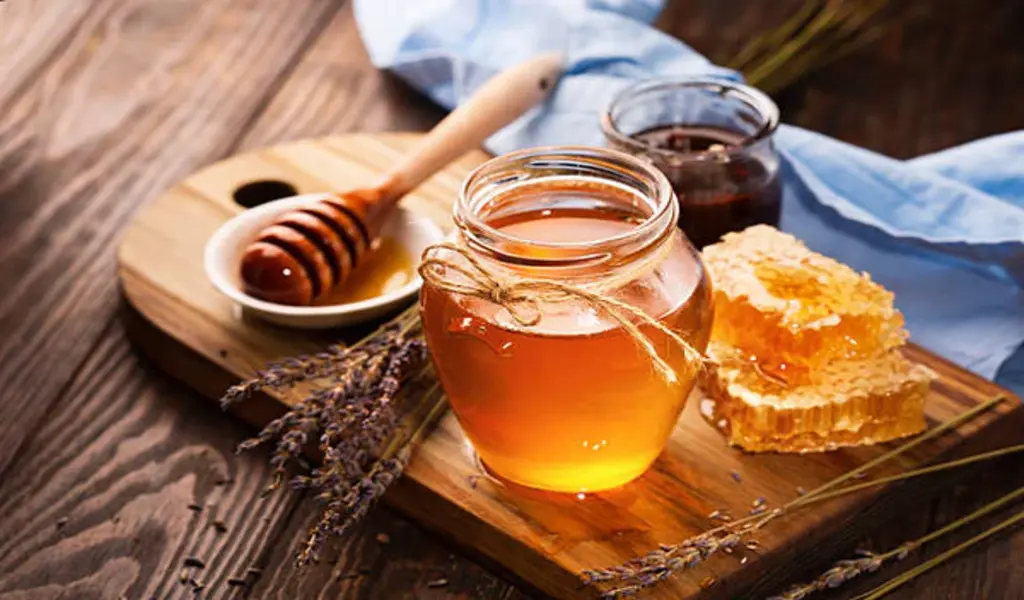Food
Choosing the Right Honey: A Guide to Varieties, Tastes, and Pairings

Are you searching for the ideal honey to elevate your dishes and beverages? Honey has sweetened human history for centuries, gracing dishes across various cultures. Yet, with many options, selecting the perfect one can take time and effort.
It’s fascinating how the flavor nuances of honey can differ based on the bee species, the floral sources of their nectar, and the processing techniques employed. This article delves into some of the most sought-after honey varieties, distinctive flavors, and perfect culinary pairings. Join us on this delectable journey into the world of honey!
Tastes
The taste of honey can vary, depending on the type of flower or plant the bees visit. Some honey types have a milder, lighter taste, while others can be richer and more complex.
For instance, Orange Blossom Honey is fruity and light, while Buckwheat Honey is dark and robust, with notes of molasses and a slight bitterness. You can also choose honey based on its level of sweetness, with some variations having a higher sugar content than others.
Varieties
There is a wide array of honey varieties produced around the world. The type of honey you select can depend on factors such as where it is produced, the flower or plant the bees visit, or the method used to extract it.
For example, some popular varieties include Manuka honey from New Zealand, famous for its antibacterial properties, and Acacia honey, prized for its delicate and light taste. Other varieties include Clover, Eucalyptus, Lavender, and Mad Honey.
Pairings
Honey’s diverse range and flavor profiles significantly influence its culinary pairings. While some varieties can be a delightful condiment or spread, others are a favored sweetener for yogurt, tea, and toast. The versatility of honey also shines in salad dressings, sauces, and marinades, enriching the overall dining experience.
For instance, the delicate sweetness of Clover honey enhances the flavors of light dishes such as grilled fish or fresh fruit. In contrast, the golden hue and rich buttery taste of Tupelo honey make it an ideal companion for roasted turkey or a sandwich laden with cream cheese.
Choosing the Right Honey: Tips and Tricks
Honey, often called the “golden nectar,” is not just a sweet treat. It’s a product of nature that varies in flavor, texture, and health benefits based on several factors. When selecting the best honey for your needs, there are a few critical aspects to consider.
Origin of the Honey
The origin of honey plays a crucial role in its flavor and properties. Honey sourced from various geographical locations boasts distinct characteristics; for example, New Zealand’s Manuka honey is famed for its exceptional medicinal qualities, whereas Europe’s Acacia honey is cherished for its translucent, light hue. Choosing between local and imported honey presents its considerations.
Local honey might be more attuned to one’s specific environment, potentially aiding those combating seasonal allergies. At the same time, imported options allow enthusiasts to savor the rich diversity of global flora.
Flowers or Plants Visited by the Bees
The type of flowers or plants frequented by bees significantly influences the characteristics of the honey produced. Single-source honey results when bees predominantly visit one flower variety, like clover or lavender, often yielding honey with a unique flavor echoing that specific flower.
In contrast, wildflower or multi-floral honey emerges from bees’ visits to diverse flowers, leading to a richer, often darker, and more robust flavor profile. Additionally, it’s held by some that honey derived from certain plants offers specific health advantages, such as buckwheat honey, which is recognized for its abundant antioxidant content.
Color and Texture
Honey’s appearance varies in both color and texture. The color spectrum of honey stretches from nearly transparent to a deep brown, with lighter shades generally offering a milder flavor and darker hues providing a more potent, robust taste.
As for its texture, honey can present as liquid, creamy, or even crystallized. Some individuals favor the silky consistency of liquid honey, while others appreciate the luxurious feel of creamed honey. Importantly, crystallization doesn’t signify spoilage; it’s a natural occurrence that can be counteracted with gentle heating.
Closing Thoughts
Honey is a versatile and healthy sweetener used in various applications, from cooking to baking to adding to your drinks. Choosing the right variety and pairing it with the right food is essential to maximize its flavor and benefits.
Selecting the right honey goes beyond just picking a jar off the shelf. By paying attention to its origin, the flowers or plants involved in its production, its appearance, labeling details, and most importantly, its taste, you can ensure that you’re choosing a honey that’s not just delicious but also best suited to your needs.
Whether you’re looking for health benefits, a specific flavor profile, or wish to experiment, understanding these factors can guide you in making an informed choice.
SEE ALSO: What Cannabis (Marijuana) Can Do for Your Health and Wellness





























